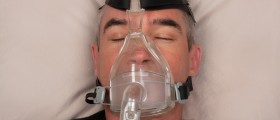
With the advent of modern technology and with invention of devices that measure the activity of brain waves, such as EEG machine, the science was able to study sleep in ways that were not previously possible. Sleep is not a simple process, it has different types and progresses in different stages, each with its own characteristics.
Stages of sleep
Two main types of sleep are NREM or non-rapid eye movement, also called quiet sleep, and REM, rapid eye movement, sometimes called paradoxical sleep.
Stage 1 is the earliest stage of sleep, a transition between being awake and sleeping. It lasts for five to ten minutes, during which time a person can easily be awakened. In this stage the brain produces high amplitude theta waves, which are very slow. Phenomena such as hypnagogic hallucinations or myoclonic jerks are very common in this stage.
Stage 2 is the next stage, lasting more or less 20 minutes. The brain produces so called sleep spindles, which are bursts of rhythmic, rapid brain activity. As for the body, the physiologic changes at this stage include drops in body temperature and breathing rate.
Stage 3 is a transitional stage between light sleep and deep sleep. In this phase, slow, deep brain waves called delta waves begin to emerge.
Stage 4 is also called delta stage because of the characteristic delta waves of the brain. This is a stage of deep sleep that lasts approximately 30 minutes. Sleepwalking and bedwetting are most likely to occur in stage 4.
Stage 5 is the REM or rapid eye movement stage of sleep. Most dreaming occurs during this stage because of the increased brain activity. Physiologically, REM stage is characterized by eye movement beneath the closed eyelid and increased breathing rate and pulse. REM stage is called paradoxical stage because, while the brain and other body systems become more active, the muscles become relaxed, as if paralyzed.
Sequence of sleep stages
In order to fully understand the process of sleeping, it is important to remember that stages of sleep do not progress in sequence. The sleep does not start at stage 1 and end at age 4. In fact, the stages are repeated in cycles. After stages 4, stages 3 and two are repeated before the next REM stage starts. The stage 1 is usually omitted after the first cycle so after the REM stage the stage 2 starts again. These cycles of sleep through stages are repeated four or five times during the night.
A person will most likely enter the REM phase 90 minutes after falling asleep. The first REM phase will probably last only a few minutes, but as the sleep progresses and the cycle is repeated, this phase lasts longer and longer, usually one hour or so.
A healthy, resting sleep needs to run normally through all the stages in normal order. If some of the stages are skipped or disturbed, the sleep may not be as refreshing as it is supposed to. Most experts agree that adults are supposed to get six to nine hours of uninterrupted sleep, preferably during the night.

















Your thoughts on this
Loading...